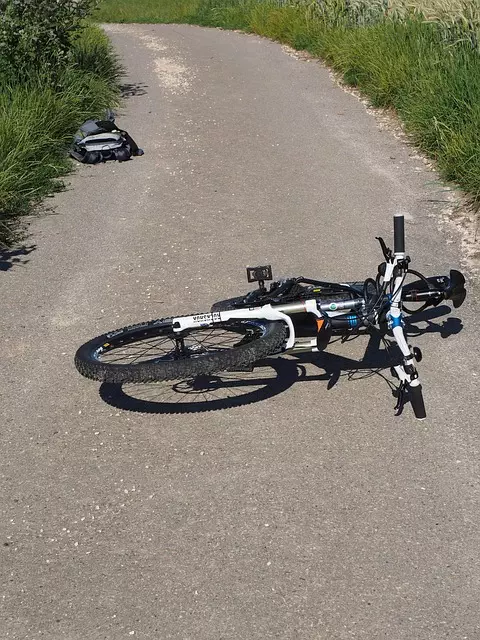In New York City, cell phone distractions while driving are a growing safety hazard, leading to severe injuries and traumatic brain injuries (TBI). With high traffic and dense pedestrian areas like Manhattan, drivers' temptations to use their phones significantly increase accident risks. Victims of such accidents can seek legal recourse with traumatic brain injury attorneys Manhattan, who specialize in personal injury cases, ensuring fair compensation for medicals, lost wages, and pain and suffering. Strict laws and enhanced public awareness are needed to deter distracted driving and protect vulnerable pedestrians and cyclists.
In the bustling city of New York, cell phone use while driving has become a growing concern, contributing to an alarming rise in car accidents. This article explores the pervasive issue of driver distraction caused by mobile devices, focusing on NYC’s unique challenges. We delve into its impact on pedestrians and cyclists, analyze legal implications, and uncover common causes of cell phone-related crashes in Manhattan. Additionally, we highlight the potential for traumatic brain injuries (TBI) and the long-term effects, emphasizing the role of traumatic brain injury attorneys Manhattan.
- The Rising Concern: Cell Phone Distraction in NYC Traffic
- Impact on Pedestrians and Cyclists: Unprotected Vulnerability
- Legal Implications: Holding Drivers Accountable for Negligence
- Common Causes of Cell Phone-Related Accidents in Manhattan
- Traumatic Brain Injuries: Long-Term Effects and Compensation
The Rising Concern: Cell Phone Distraction in NYC Traffic

In recent years, a pressing concern has emerged in New York City (NYC) traffic—cell phone distraction. With the omnipresence of smartphones, drivers are increasingly tempted to check texts, make calls, or scroll through social media while behind the wheel. This behavior is not just irresponsible; it’s illegal and highly dangerous. Studies show that using a cell phone while driving can be as hazardous as operating a vehicle with a blood alcohol content above the legal limit. The consequences of a momentary distraction can be devastating, leading to severe injuries or even fatalities.
NYC, known for its bustling streets and relentless pace, is also a hotbed for these distracted driving incidents. Traumatic brain injuries (TBI) are a significant outcome of car accidents involving cell phone use. Unfortunately, the city’s dense population and complex traffic patterns make it easier for drivers to get distracted. This rising concern has prompted authorities to increase enforcement efforts and public awareness campaigns targeting cellphone users on the road. For victims of such accidents, seeking the help of experienced traumatic brain injury attorneys Manhattan can be crucial in ensuring justice and proper compensation.
Impact on Pedestrians and Cyclists: Unprotected Vulnerability

In New York City, where bustling streets and crowded sidewalks are the norm, cell phone use while driving poses a significant risk to pedestrians and cyclists. These road users often find themselves in an unprotected vulnerability, becoming victims of accidents caused by distracted drivers. With the constant buzz of notifications and the temptation to check messages, many drivers engage in activities that take their eyes and attention off the road, increasing the likelihood of collisions.
Pedestrians and cyclists, especially in urban areas like Manhattan, are more susceptible to severe injuries when involved in accidents with vehicles. Traumatic brain injuries (TBI) are a common outcome due to the force of impact and lack of protection. When a driver is distracted by their phone, they may fail to notice a pedestrian crossing or a cyclist turning, leading to devastating consequences. Traumatic brain injury attorneys in Manhattan often deal with cases where individuals have suffered long-term disabilities or even fatalities due to these preventable accidents.
Legal Implications: Holding Drivers Accountable for Negligence

In New York City, car accidents caused by cell phone use are a significant concern, leading to severe injuries and even fatalities. When a driver engages in activities like texting or making calls while behind the wheel, their reaction time is considerably delayed, putting not only themselves but also passengers and other road users at risk. Legal implications of such incidents are stringent, with drivers found negligent liable for the consequences.
Drivers who cause accidents due to distracted behavior may face severe penalties, including fines, license suspension, or even imprisonment. Moreover, victims of such accidents have legal recourse through traumatic brain injury attorneys Manhattan. These professionals specialize in navigating complex personal injury cases, ensuring that affected individuals receive fair compensation for medical expenses, lost wages, and pain and suffering. Holding drivers accountable for their actions not only serves as a deterrent but also helps compensate those who suffer because of distracted driving.
Common Causes of Cell Phone-Related Accidents in Manhattan

Cell phone distractions have become a significant concern on New York City’s bustling streets, particularly in Manhattan. According to recent studies, texting while driving or using a mobile device increases the risk of accidents by 400 percent. With countless pedestrians, cyclists, and vehicles sharing the roads, the consequences of cell phone use during travel can be devastating.
The most common causes of cell phone-related accidents in Manhattan include drivers sending or reading texts, making calls, or navigating apps while behind the wheel. These activities divert their attention from the road, leading to delayed reaction times and an increased likelihood of colliding with other vehicles, pedestrians, or fixed objects. Tragically, such incidents often result in severe injuries, including traumatic brain injuries (TBI), which can have long-lasting effects on victims’ lives. Traumatic brain injury attorneys Manhattan have seen a rise in cases where phone distractions play a significant role, underscoring the need for greater public awareness and stricter enforcement of laws aimed at curbing this dangerous behavior.
Traumatic Brain Injuries: Long-Term Effects and Compensation

Car accidents involving distracted driving, particularly cell phone use, can lead to severe and long-lasting consequences, including traumatic brain injuries (TBI). These injuries are often underestimated due to their complex nature and wide range of symptoms that may not manifest immediately. TBIs can result in cognitive, emotional, and physical impairments, affecting a person’s ability to work, socialize, and perform daily tasks. Symptoms might include headaches, memory loss, concentration difficulties, and even personality changes.
In New York City, traumatic brain injury attorneys Manhattan are well-versed in handling cases where cell phone use contributes to accidents. If you or someone close to you has suffered a TBI due to another driver’s negligence, it is crucial to consult with experienced legal professionals who can guide you through the process of seeking compensation for medical expenses, lost wages, pain and suffering, and other damages associated with these injuries. Early legal intervention can ensure that your rights are protected and that you receive fair and adequate compensation for your long-term care needs.
Cell phone usage while driving is a growing concern in New York City, leading to severe accidents and life-altering injuries. The above sections have highlighted the multifaceted impact of this issue, from increased risks for pedestrians and cyclists to the legal accountability of drivers. Manhattan’s bustling streets serve as a cautionary tale, emphasizing the need for heightened awareness and stricter regulations. For those affected by cell phone-related accidents, seeking guidance from experienced traumatic brain injury attorneys in Manhattan is crucial to understanding one’s rights and potential compensation. It’s time to prioritize road safety and make our city’s traffic a safer place for all.
